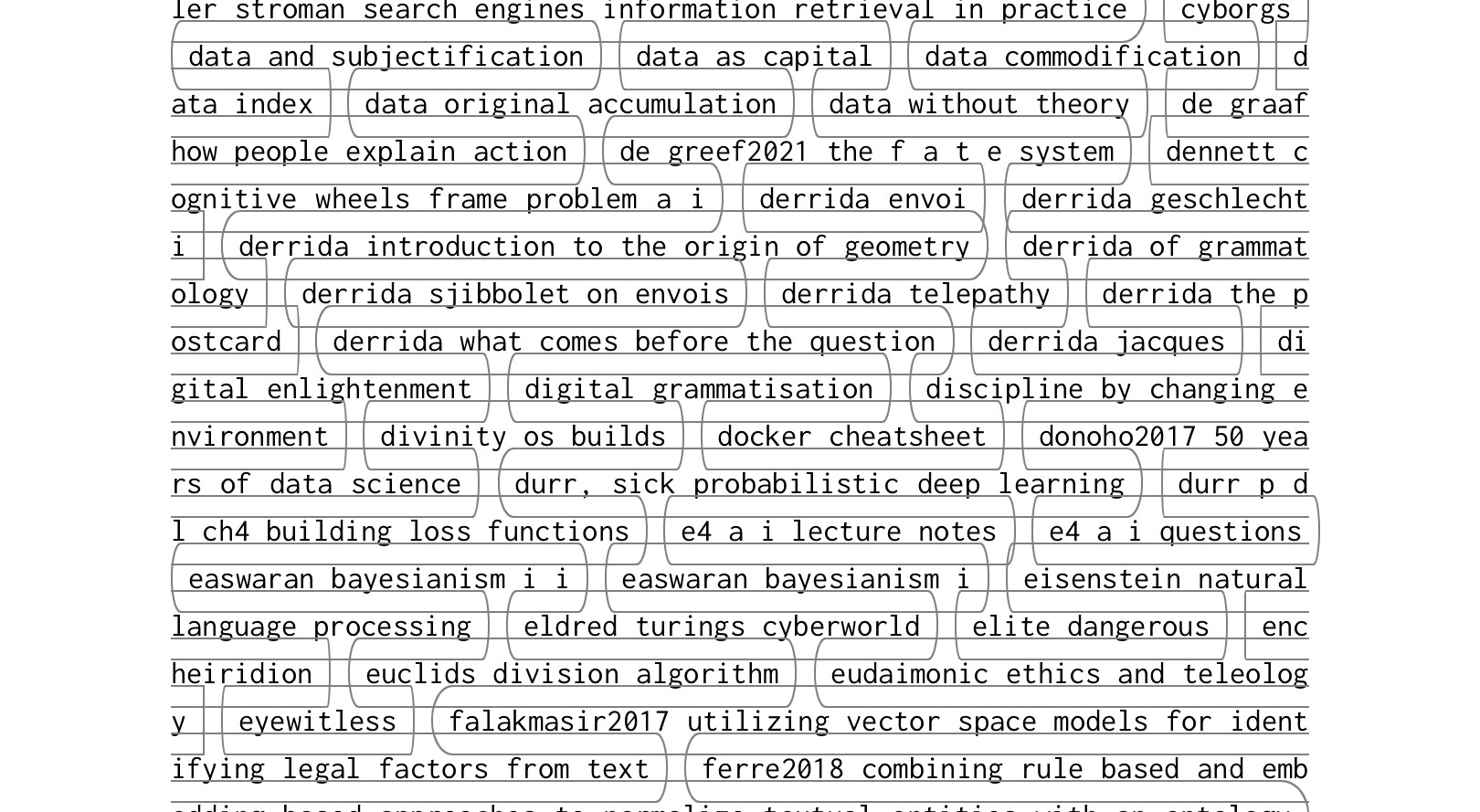Atomic Notes
Daniel Wisser’s notecards as art and archive
Daniel Wisser’s exhibition in Vienna features 60 index cards with sketches of stories displayed in a note box (Zettelkasten).
What Tim Berners-Lee Has to Teach About Effective Notes
Tim Berners-Lee’s insights on the interconnected nature of knowledge have inspired a flexible, web-like approach to note-making that mirrors my natural thinking rather than some restrictive categorization.
“The rapid passage of time is a complete antimeaning machine. Doesn’t life absolutely require tactical slowing down if a person, even a smart, serious, concerned one, is to find the time and space to make meaning?” - Eric Maisel
Tactical slowing down is great, but then writing slowly is a whole strategy.
Leibniz created a haystack of notes that wouldn't fit in his Zettelschrank
Gottfried Leibniz, a prolific yet disorganized thinker, struggled to manage an overwhelming influx of ideas, resulting in a vast but minimally published literary legacy. Is this a cautionary tale or some other kind of tale? I have an opinion.
Sinister Zettelkasten?
The 2025 Sydney Film Festival program features Jodie Foster’s new film, “Vie privée,” accompanied by a marketing image that evokes mystery with index card boxes in the background.
“You only come to know these things in hindsight – when you look back and see the precarious chain of events, happenstance, and good fortune that led to wherever you are now. Before you reach that point, you have no way of predicting which idea will make a difference and which will die on the vine. That’s why you record them all. No matter how random, how small, how half-baked, how unfinished it may be; if you have a thought, record it right away.” ― Antony Johnston, The Organised Writer.
I found a way to create order from my jumbled ideas
A discussion of the SOLO taxonomy model of learning, which emphasizes the progression from disorganized ideas to structured knowledge through atomic notes and meaningful connections.
“It is surprising how much one can produce in a year, whether of buns or books or pots or pictures, if one works hard and professionally for three and a half hours every day for 330 days. That was why, despite her disabilities, Virginia was able to produce so very much."—Leonard Woolf. Source.
My take: Choose your own race and finish it. The image is an example of how AI already looks unfashionable.

From tiny drops of writing, great rivers will flow
A river is made of water droplets. Breaking large writing projects into smaller parts makes the task more manageable and less daunting. Who knew?
Have you ever read a book by mistake?
Confession time: a mistaken identity led to the discovery of Cynthia Ozick’s novel The Messiah of Stockholm, which I enjoyed despite initially confusing it with a work by Ruth Ozeki.
Writing notes is much more than just writing notes. Done right, it’s a way of working with ideas:
I’m organising my notes right now and stumbled over this quote:
You’re not building a note-taking system, but rather a way to capture, explore, and generate ideas. by Jorge Arango on page 181 Duly Noted
The future of the humanities is wide open
The humanities within universities are facing decline and financial prioritization, yet interest in liberal arts thrives outside academic institutions.
To understand the future of AI, look to the past
The hype about AI isn’t new. In his day, Victor Hugo was breathless about the book.
Why not publish all your notes online?
Contemplating whether to publish personal notes online reveals both the potential benefits of motivation and community engagement and the drawbacks of self-doubt and privacy concerns.
In his intriguing Zettelkasten, machine learning engineer Edwin Wenink has made 899 of his private notes public edwinwenink.xyz.
These notes are a constant work in progress and not necessarily intended for your reading. Nevertheless, I submit them to your “voyeurism.”
(HT: Annie)
And previously, Andy Matuschak has recommended working with the garage door up.
But where’s the limit?

Some say that due to AI, “the vast majority of human beauty that will exist has already been created”. I’m pointing out the opposite:
It’s a great time to be writing the future.
Why? Well, by nature humans innovate. Humans equipped with AI?
They just innovate harder.
Legendary computer game Myst started life as an interconnected network of cards in the equally legendary app HyperCard. To be precise, 1,355 cards in 6 HyperCard stacks.
Now, through graph analysis the last secrets of that network are finally being ‘deMystified’.
An interesting Zettelkasten discussion.
malikalimoekhamedov.substack.com/p/bob-dot…
See also: my review of A System for Writing.
Five solutions to link rot in my personal note collection
Link rot on the Web poses significant challenges, which have prompted me to consider various strategies for preserving information, including summarizing sources, using archives, creating personal archives, accepting impermanence, and sharing knowledge.
Tame the chaos with just four folders for all your notes
Bob Doto’s A System for Writing recommends a structured Zettelkasten (note box) using four folders: In-box, Sleeping, References, and Main. With just these four you can manage your notes effectively and enhance the writing process.